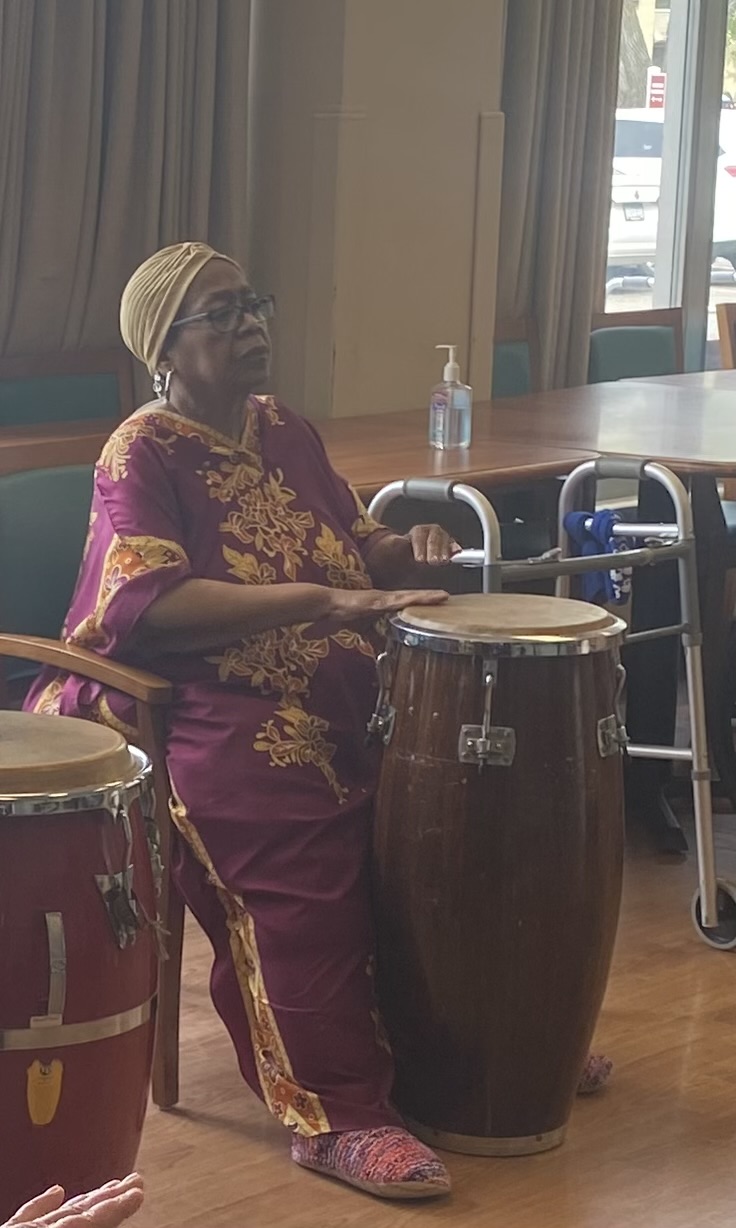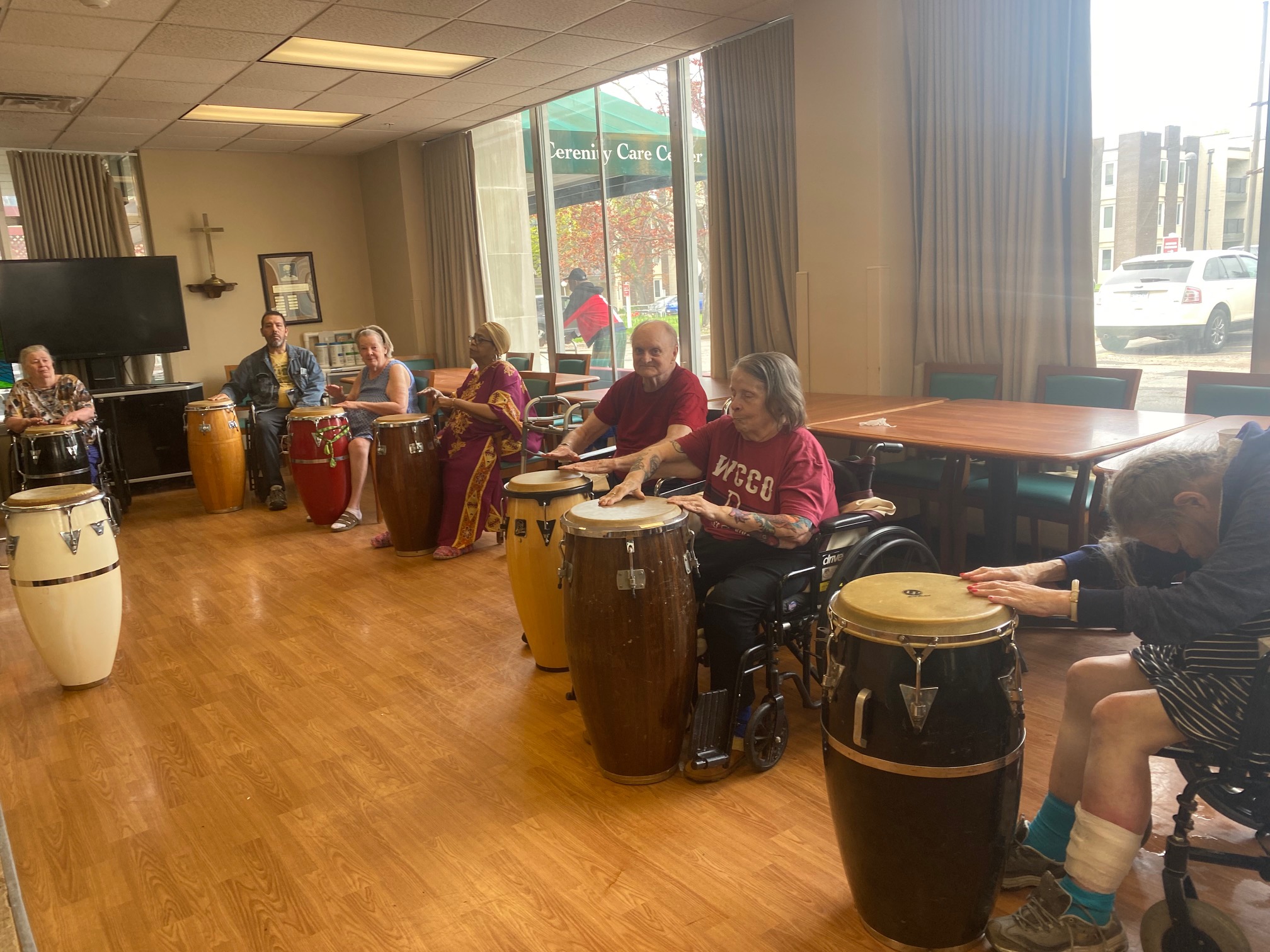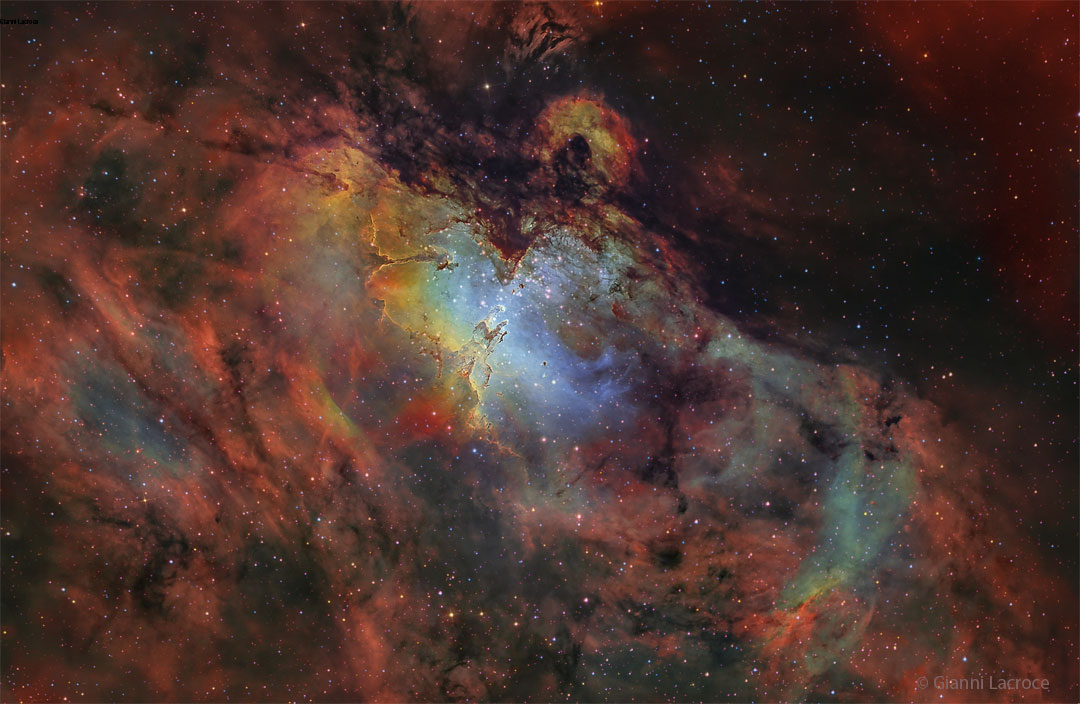Blog
Richard Christopher Wakeman CBE (born 18 May 1949) is an English keyboardist and composer best known as a former member of the progressive rock band Yes across five tenures between 1971 and 2004, and for his solo albums released in the 1970s. AllMusic describes Wakeman as a “classically trained keyboardist extraordinaire who plied his trade with Yes and developed his own brand of live spectacular in a solo act.”
Born and raised in West London, Wakeman quit his studies at the Royal College of Music in 1969 to become a full-time session musician. His early sessions included “Space Oddity“, among other tracks, for David Bowie, and songs by Elton John, Marc Bolan, Cat Stevens, and Lou Reed. In 1970 Wakeman joined the folk rock group The Strawbs, during which his virtuosity gained national press coverage. He left in 1971 to join Yes, with whom he played on some of their most influential albums across two stints until 1980. During this time Wakeman began a solo career in 1973 and became an iconic and prominent figure in progressive rock. His highest-selling and most acclaimed albums are his first three: The Six Wives of Henry VIII (1973), the UK number-one Journey to the Centre of the Earth (1974), and The Myths and Legends of King Arthur and the Knights of the Round Table (1975), all concept albums. In 1974 he formed his band, The English Rock Ensemble, with which he toured worldwide and continues to perform, and went on to score his first major film, Lisztomania (1975).
Wakeman had uneven success in the next two decades following a change in musical fashion and financial issues from two divorces. His most popular album was the conceptual rocker 1984 (1981), which was followed by the minor pop hit single “Glory Boys” from Silent Nights (1985). He expanded into other areas such as hosting the television show Gastank, composing for television and film, forming record labels, and producing his first New-age, ambient, and Christian music with Country Airs (1986) and The Gospels (1987), respectively. In 1989 he reunited with former Yes bandmates for Anderson Bruford Wakeman Howe, which led to his third period in the group until 1992. Wakeman’s most significant album of the 1990s was Return to the Centre of the Earth (1999), his first UK Top 40 album in 18 years, and his piano album Piano Portraits(2017) produced his first UK Top 10 album since 1975. Starting in 2009, Wakeman revisited his three hit albums of the 1970s by performing them live with new and expanded arrangements. From 2016 to 2020, Wakeman was a member of Yes Featuring Jon Anderson, Trevor Rabin, Rick Wakeman. He continues to record albums and perform concerts worldwide in various capacities; his most recent album is A Gallery of the Imagination (2022).
Wakeman’s discography includes over 90 solo albums spanning a range of musical styles. He has also gained notoriety for his appearances on the television programs Live at Jongleurs, Countdown, Grumpy Old Men, and Watchdog, and for his radio show on Planet Rock that aired from 2005 to 2010. Wakeman has written an autobiography and two memoirs. In 2017, he was inducted into the Rock and Roll Hall of Fame as a member of Yes. He was awarded a CBE for his services to music and broadcasting in 2021.
https://www.youtube.com/watch?v=YJ9W2pZwvlY
more...Lou Bennett (May 18, 1926, Philadelphia – February 10, 1997, Paris) was an American jazz organist.
Bennett first played bebop on piano, but started playing organ in 1956 after hearing Jimmy Smith. Bennett toured the U.S. with an organ trio between 1957 and 1959, and then moved to Paris in 1960. There he recorded and performed at the Blue Note with Jimmy Gourley and Kenny Clarke (as well as Rene Thomas); he returned to America only once, for the 1964 Newport Jazz Festival. He also recorded in the 1960s with Philip Catherine, Shirley Bunnie Foyand Franco Manzecchi. In the 1980s he played in his own quintet with Gerard Badini, among others. During this period he also toured extensively throughout Spain, including, Almeria, Barcelona, La Coruna, Segovia, and Madrid.
more...Fifth in a series of Rhythm Roots Workshops at Cerenity Humboldt Senior Care (https://cerenityseniorcare.org/cerenity-senior-care-humboldt-st-paul-mn/) Exploring rhythms from Egypt, Algeria, Turkey, Dominican Republic, Spain and Brazil. Running on Wednesdays 130-3pm thru June 14th 2023.


the Eagle Nebula, however, shows the bright region is actually a window into the center of a larger dark shell of dust. Through this window, a brightly-lit workshop appears where a whole open cluster of stars is being formed. In this cavity, tall pillars and round globules of dark dust and cold molecular gas remain where stars are still forming. Already visible are several young bright blue stars whose light and winds are burning away and pushing back the remaining filaments and walls of gas and dust. The Eagle emission nebula, tagged M16, lies about 6500 light years away, spans about 20 light-years, and is visible withbinoculars toward the constellation of the Serpent (Serpens). This picture involved long and deep exposures and combined three specific emitted colors emitted by sulfur (colored as yellow), hydrogen (red), and oxygen (blue).

John Lenwood “Jackie” McLean (May 17, 1931 – March 31, 2006) was an American jazz alto saxophonist, composer, bandleader, and educator, and is one of the few musicians to be elected to the DownBeat Hall of Fame in the year of their death.
McLean was born in New York City. His father, John Sr., played guitar in Tiny Bradshaw‘s orchestra. After his father’s death in 1939, Jackie’s musical education was continued by his godfather, his record-store-owning stepfather, and several noted teachers. He also received informal tutoring from neighbors Thelonious Monk, Bud Powell, and Charlie Parker. During high school McLean played in a band with Kenny Drew, Sonny Rollins, and Andy Kirk, Jr. (the saxophonist son of Andy Kirk).
more...William Scott Bruford (born 17 May 1949) is an English former drummer and percussionist who first gained prominence as a founding member of the progressive rock band Yes. After leaving Yes in 1972, Bruford spent the rest of the 1970s recording and touring with King Crimson (1972–1974) and Roy Harper (1975), and touring with Genesis (1976) and U.K. (1978). In 1978, he formed his own group, Bruford, which was active until 1980.
During the 1980s, Bruford returned to King Crimson for three years (1981–1984), collaborated with several artists (including Patrick Moraz and David Torn), and formed his own electric jazz band Earthworks in 1986. He then played with his former Yes bandmates in Anderson Bruford Wakeman Howe, which eventually led to a very brief second stint in Yes. Bruford played in King Crimson for his third and final tenure from 1994 to 1997, then continued with a new acoustic configuration of Earthworks.
On 1 January 2009, Bruford retired from professional drumming, only briefly returning for a few private gigs. He has pursued other projects since then, including the operation of his two record labels, Summerfold and Winterfold, releasing an autobiography in 2009, and speaking and writing about music. In 2016, after four and a half years of study, Bruford received a PhD in Music from the University of Surrey. That year, Bruford ranked No. 16 on Rolling Stone‘s list of the “100 Greatest Drummers of All Time”. In 2017, Bruford was inducted into the Rock and Roll Hall of Fame as a member of Yes.
more...Henry St. Claire Fredericks Jr. (born May 17, 1942), better known by his stage name Taj Mahal, is an American blues musician. He plays the guitar, piano, banjo, harmonica, and many other instruments, often incorporating elements of world music into his work. Mahal has done much to reshape the definition and scope of blues music over the course of his more than 50-year career by fusing it with nontraditional forms, including sounds from the Caribbean, Africa, India, Hawaii, and the South Pacific.
Mahal was born Henry St. Claire Fredericks Jr. on May 17, 1942, in Harlem, New York City. Growing up in Springfield, Massachusetts, he was raised in a musical environment: his mother was a member of a local gospel choir and his father, Henry Saint Claire Fredericks Sr., was an Afro-Caribbean jazz arranger and piano player. His family owned a shortwave radio which received music broadcasts from around the world, exposing him at an early age to world music. Early in childhood he recognized the stark differences between the popular music of his day and the music that was played in his home. He also became interested in jazz, enjoying the works of musicians such as Charles Mingus, Thelonious Monk and Milt Jackson. His parents came of age during the Harlem Renaissance, instilling in their son a sense of pride in his Caribbean and African ancestry through their stories.
more...Walter Dewey Redman (May 17, 1931 – September 2, 2006) was an American saxophonist who performed free jazz as a bandleader and with Ornette Coleman and Keith Jarrett.
Redman mainly played tenor saxophone, though he occasionally also played alto, the Chinese suona (which he called a musette), and clarinet. His son is saxophonist Joshua Redman.
Redman was born in Fort Worth, Texas. He attended I.M. Terrell High School, and played in the school bandwith Ornette Coleman, Prince Lasha, and Charles Moffett. After high school, he briefly enrolled in the electrical engineering program at the Tuskegee Institute in Alabama but became disillusioned with the program and returned home to Texas. In 1953, he earned a bachelor’s degree in Industrial Arts from Prairie View Agricultural and Mechanical University. While at Prairie View, he switched from clarinet to alto saxophone, then to tenor. After graduating, he served for two years in the U. S. Army.
more...Paul Quinichette (May 17, 1916 – May 25, 1983) was an American jazz tenor saxophonist. He was known as the “Vice President” or “Vice Prez” for his emulation of the breathy style of Lester Young, whose nickname was “The President”, or simply “Prez”. Young called Quinichette “Lady Q”.
Quinichette was born in Denver, Colorado, United States. He had clarinet and alto saxophone lessons as a child, before switching to tenor saxophone. Around the age of 13, he had informal lessons from Lester Young.
more...Resembling a curled sleeping snake, this picture shows NGC 1087. This spiral galaxy, located approximately 80 million light-years from Earth in the constellation of Cetus, is captured here by a combination of observations conducted at different wavelengths –– or colours –– of light. But no need to worry, NGC 1087 will not poison you! The apparent menacing red glow actually corresponds to clouds of cold molecular gas, the raw material out of which stars form. Astronomers are able to image these clouds thanks to the Chile-based Atacama Large Millimeter/submillimeter Array (ALMA), in which ESO is a partner. The bluish regions in the background reveal the pattern of older, already formed stars, imaged by the Multi-Unit Spectroscopic Explorer (MUSE) on ESO’s Very Large Telescope (VLT) also in Chile. The images were taken as part of the Physics at High Angular resolution in Nearby GalaxieS (PHANGS) project. The team is making high-resolution observations of nearby galaxies with telescopes operating across a wide range of wavelengths. Different wavelengths tell us about the physical properties of stars, gas and dust within galaxies, and by comparing them astronomers are able to study what activates, boosts or hinders the birth of new stars.

more...
Isaac “Redd” Holt (born May 16, 1932) is an American jazz and soul music drummer. Holt was born in Rosedale, Mississippi, and raised in Chicago. He first began playing drums as a student at Crane High School, where he played in an ensemble with future collaborators Ramsey Lewis and Eldee Young. Holt studied music at the Chicago Musical College and radio and television at Kennedy–King College.
more...Robert Fripp (born 16 May 1946) is an English musician, songwriter, record producer, and author, best known as the guitarist, founder and longest-lasting member of the progressive rock band King Crimson. He has worked extensively as a session musician and collaborator, notably with David Bowie, Blondie, Brian Eno, Peter Gabriel, Daryl Hall, Midge Ure, Talking Heads, and David Sylvian. He also composed the startup sound of Windows Vista operating system, in collaboration with Tucker Martine and Steve Ball.[2][3] His discography includes contributions to over 700 official releases.
His compositions often feature unusual asymmetric rhythms, influenced by classical and folk traditions. His innovations include a tape delay system known as Frippertronics and new standard tuning.
more...William Emanuel Cobham Jr. (born May 16, 1944) is a Panamanian–American jazz drummer who came to prominence in the late 1960s and early 1970s with trumpeter Miles Davis and then with the Mahavishnu Orchestra.
He was inducted into the Modern Drummer Hall of Fame in 1987 and the Classic Drummer Hall of Fame in 2013. AllMusic biographer Steve Huey said, “Generally acclaimed as fusion’s greatest drummer, Billy Cobham’s explosive technique powered some of the genre’s most important early recordings – including groundbreaking efforts by Miles Davis and the Mahavishnu Orchestra – before he became an accomplished bandleader in his own right. At his best, Cobham harnessed his amazing dexterity into thundering, high-octane hybrids of jazz complexity and rock & roll aggression.”
Cobham’s influence stretched far beyond jazz; he influenced progressive rock contemporaries like Bill Bruford of King Crimson, and later ones like Danny Carey of Tool. Prince and Jeff Beck both played a version of Cobham’s Stratus in concert. Phil Collins, who named the Mahavishnu Orchestra’s The Inner Mounting Flame as a key influence on his early style, said: “Billy Cobham played some of the finest drumming I’ve ever heard on that record.”
Born in Colón, Panama, Cobham moved with his family to Brooklyn, New York, when he was three. His father, Manuel, worked as a hospital statistician during the week and played piano on weekends. Cobham started playing drums at the age of four, and joined his father four years later. When he was fourteen, he got his first drum kit as a gift after being accepted to The High School of Music & Art in New York City.
https://www.youtube.com/watch?v=Di2VRrlTT94
more...Betty Carter (born Lillie Mae Jones; May 16, 1929 – September 26, 1998) was an American jazz singer known for her improvisational technique, scatting and other complex musical abilities that demonstrated her vocal talent and imaginative interpretation of lyrics and melodies. Vocalist Carmen McRae once remarked: “There’s really only one jazz singer—only one: Betty Carter.”
Carter was born in Flint, Michigan, and grew up in Detroit, where her father, James Jones, was the musical director of a Detroit church and her mother, Bessie, was a housewife. As a child, Carter was raised to be extremely independent and to not expect nurturing from her family.
more...More Posts
- Magnolia Tree
- Gandhi God Food
- Ancient Water
- George Carlin Taxes
- Van Gogh God
- Majority of Decency
- International Inspiration
- Larry Kegan
- Rhythm Roots Workshop Tasks Unlimited
- Cosmo NGC 1514
- Selena
- Dusty Springfield
- John Littlejohn
- Bennie Green
- Herbie Mann
- Henry Mancini
- World Drumming Babatunde Olatunji
- Daily Roots Iganda
- Happy Tax Day 2025
- Ralph Nader Introspection